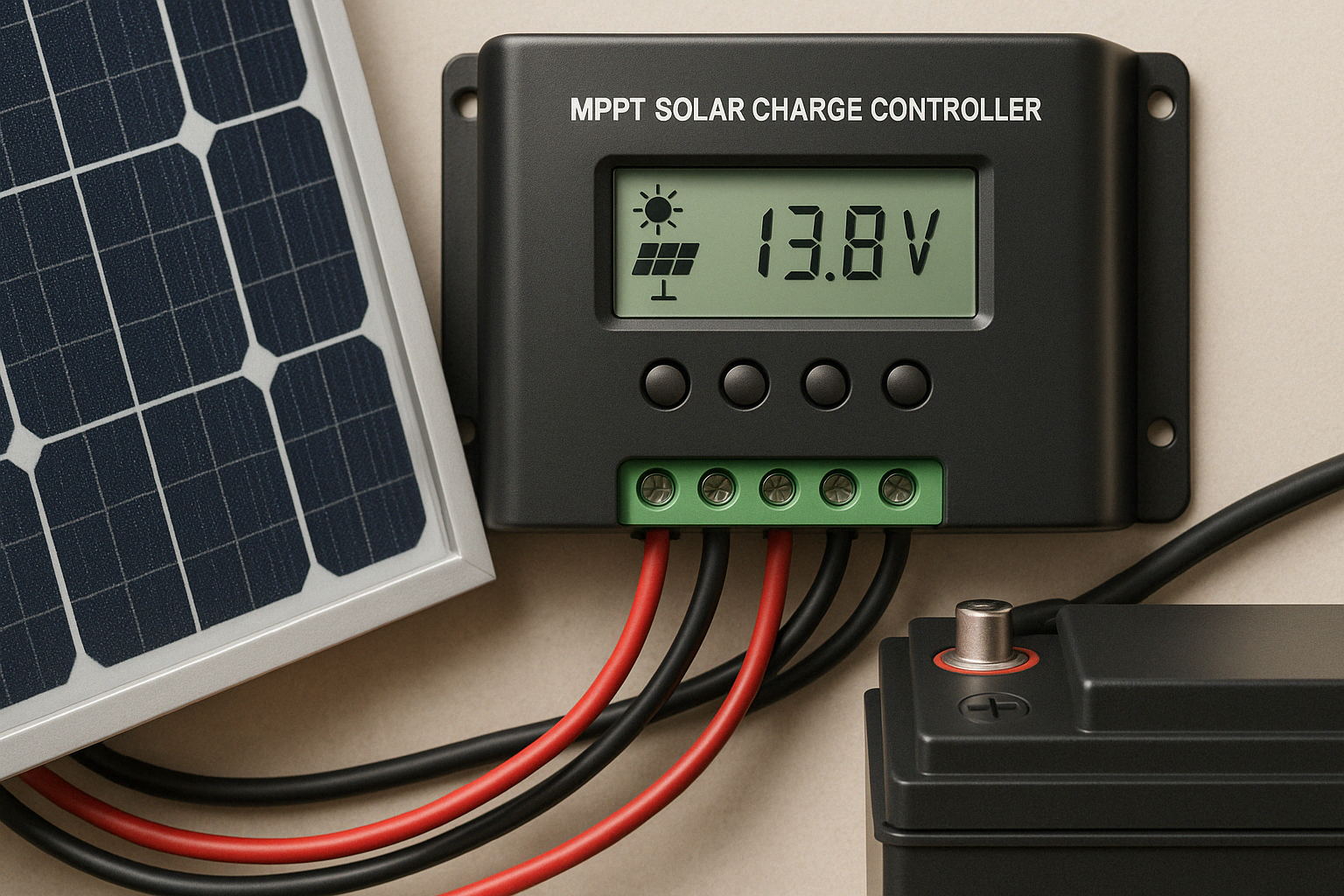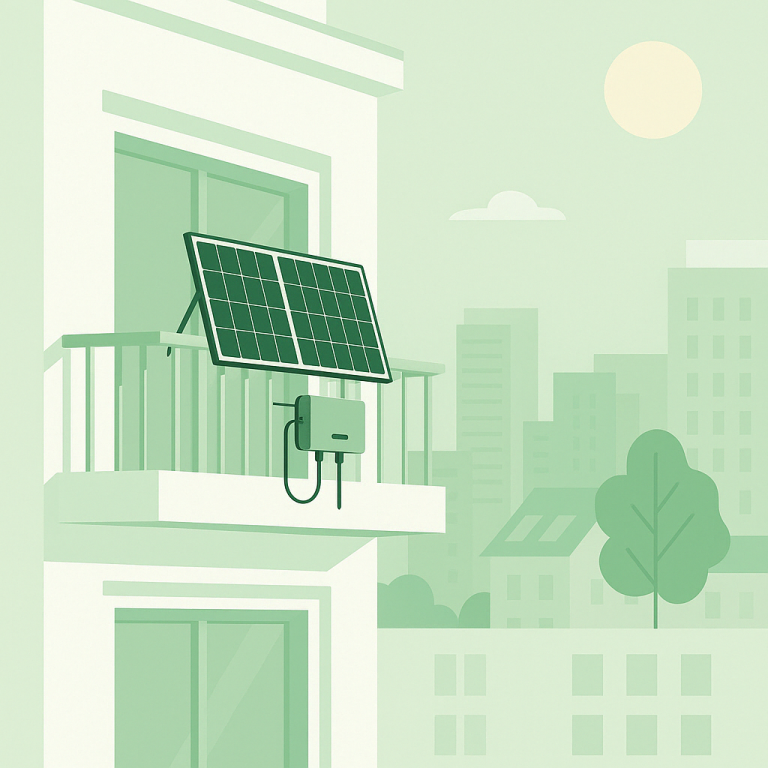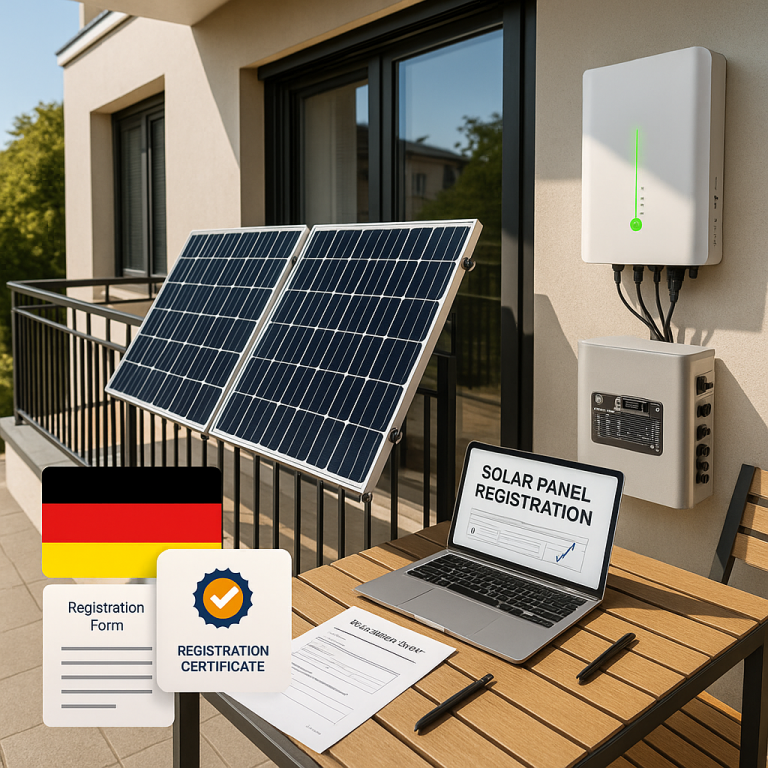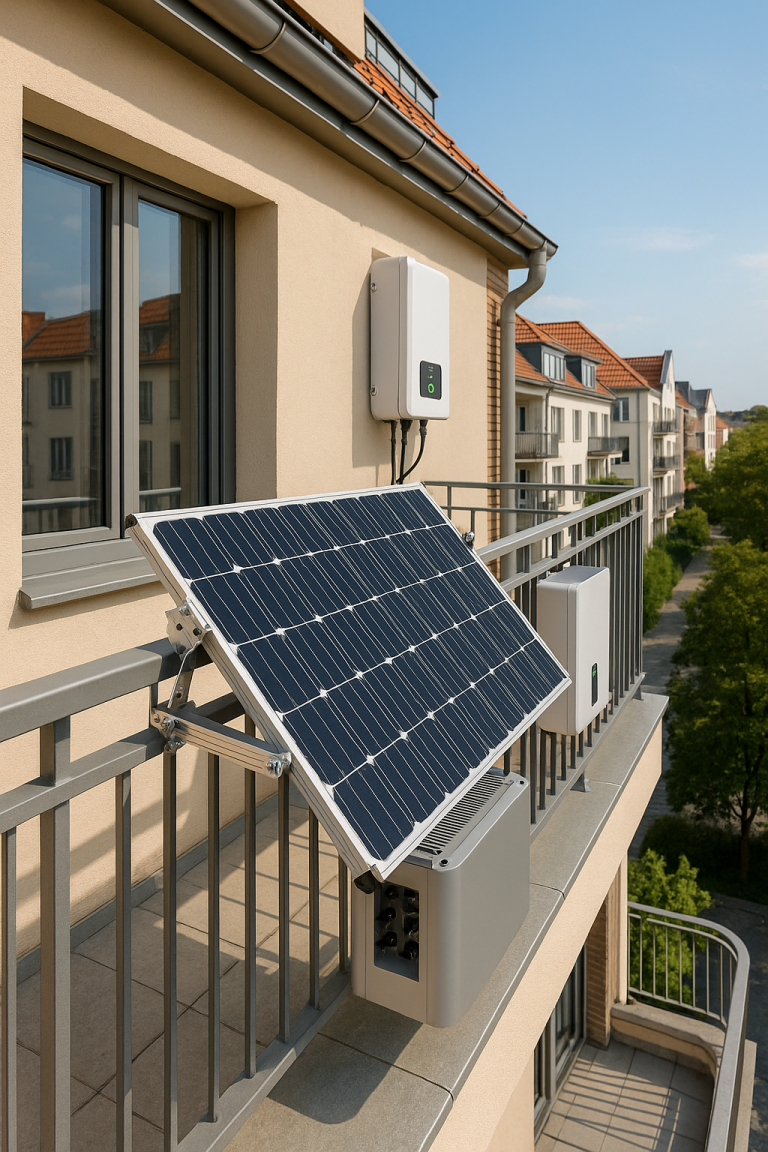1. Introduction: Why MPPT Controllers Matter
A solar system is only as efficient as its weakest component. While most people focus on solar panels and batteries, one silent workhorse makes all the difference: the MPPT charge controller.
MPPT stands for Maximum Power Point Tracking — and it’s the brain that ensures your solar panels operate at peak efficiency under all weather conditions. A high-quality MPPT controller can increase your system’s power output by up to 30% compared to traditional PWM controllers.
In this guide, we break down the 5 must-have features of a good MPPT controller and explain how it affects solar performance, battery life, and overall reliability — especially important for off-grid, balcony, and hybrid systems in Europe.
2. What Is an MPPT Charge Controller?
An MPPT controller is a device that regulates the charging of batteries using solar panel input while continuously adjusting the voltage and current to operate the panel at its maximum power point.
Unlike PWM controllers, which simply reduce voltage to match the battery, MPPT controllers actively calculate the best voltage-to-current ratio, allowing your solar panels to operate at full capacity — even in cold, cloudy, or partially shaded conditions.
In short, MPPT = more usable energy, faster charging, and better battery health.
3. Feature #1 – High Tracking Efficiency (99%+)
The single most important spec in an MPPT controller is its tracking efficiency — the ability to find and hold the panel’s optimal working point.
Look for:
- ≥99% MPPT efficiency
- ≥98% conversion efficiency
- Quick response to changing sunlight (e.g., moving clouds)
A cheap controller may advertise MPPT but actually performs poorly under dynamic weather. Reputable brands like Victron, Renogy, EPEver, or Growatt publish detailed efficiency curves — always check them.
✅ Why it matters: A 3–5% efficiency difference can equal hundreds of kWh/year lost in energy yield.
4. Feature #2 – Battery Type Compatibility (LiFePO₄, AGM, GEL)
Not all MPPTs are made equal when it comes to battery chemistry.
Must support:
- LiFePO₄ (Lithium Iron Phosphate) – growing in use due to long lifespan
- Sealed Lead Acid (AGM, GEL)
- Custom profiles – for advanced BMS-controlled systems
Look for adjustable charging parameters, including:
- Bulk/absorption/float voltages
- Temperature compensation
- Over-discharge protection
- Equalization modes (for lead-acid)
✅ Why it matters: Improper charging = shorter battery life or risk of thermal damage.
5. Feature #3 – Real-Time Monitoring and Smart Connectivity
In 2025, a good MPPT controller isn’t just efficient — it’s smart.
Top features to look for:
- Bluetooth/Wi-Fi app support (iOS + Android)
- LCD screen with voltage/current/power display
- Remote firmware updates
- CAN/RS485 communication (for integration with inverters or BMS)
Some brands offer online dashboards showing daily energy harvest, charge cycles, and system errors — ideal for prosumers and commercial monitoring.
✅ Why it matters: Visibility = control. You can spot problems early and optimize usage patterns.
6. Feature #4 – Wide Input Voltage Range & Power Capacity
The wider the controller’s input voltage range, the more flexible your system can be — especially in series-connected panel arrays.
Key specs:
- Input voltage up to 150V–250V for high-voltage panels
- Amperage capacity of 30A–100A
- Max PV power rating clearly indicated (e.g., 2,000W @ 48V)
This is critical when combining high-wattage solar panels with 48V or 51.2V LiFePO₄ battery banks in hybrid or off-grid systems.
✅ Why it matters: A mismatched controller can bottleneck your solar generation.
7. Feature #5 – Safety Protections and Certifications
Reliable MPPT controllers come with a full suite of safety features and regulatory certifications, especially important for use in Europe.
Essential protections:
- Over-voltage protection
- Reverse polarity protection
- Short circuit protection
- Over-temperature shutdown
- Ground fault detection
Certifications to check:
- CE, RoHS, VDE (for EU compliance)
- IP65/IP67 waterproofing (if installed outdoors)
- Fire safety compliance (IEC 62109)
✅ Why it matters: Solar systems carry real electrical risks — safety must never be optional.
8. Bonus: MPPT vs PWM – Why MPPT Is Always Better
| Feature | MPPT Controller | PWM Controller |
|---|---|---|
| Efficiency | 95–99% | 70–80% |
| Solar Voltage Usage | Full tracking | Drops to battery voltage |
| Price | Higher upfront | Cheaper |
| Battery Compatibility | Excellent (LiFePO₄, AGM) | Limited |
| Real-Time Monitoring | Often included | Rare |
While PWM controllers may still be used in ultra-low-budget systems, they’re no longer viable for modern European residential or commercial installations — especially with expensive lithium batteries.
9. Choosing the Right Size for Your System
To properly size your MPPT controller, calculate:
Formula:
Controller Amps ≥ PV Power (W) ÷ Battery Voltage (V)
Example: 2,400W panels ÷ 48V = ≥50A controller
Other factors to consider:
- Peak sun hours (daily yield)
- System voltage (12V / 24V / 48V / 51.2V)
- Future expansion (leave 10–20% margin)
✅ Tip: Always oversize slightly to avoid controller overloading on very sunny days.
10. Conclusion: Investing in Long-Term Solar Performance
A good MPPT controller is like the conductor of your solar orchestra — ensuring every watt of sunlight is converted, stored, and used effectively.
When choosing an MPPT controller in 2025, don’t fall for low-cost, “MPPT-labeled” devices with vague specs. Instead, invest in:
- Verified efficiency
- Battery compatibility
- Smart monitoring
- Safety compliance
- Scalability
It’s not just about today’s performance — it’s about protecting your system’s value and reliability for the next 10–15 years.




